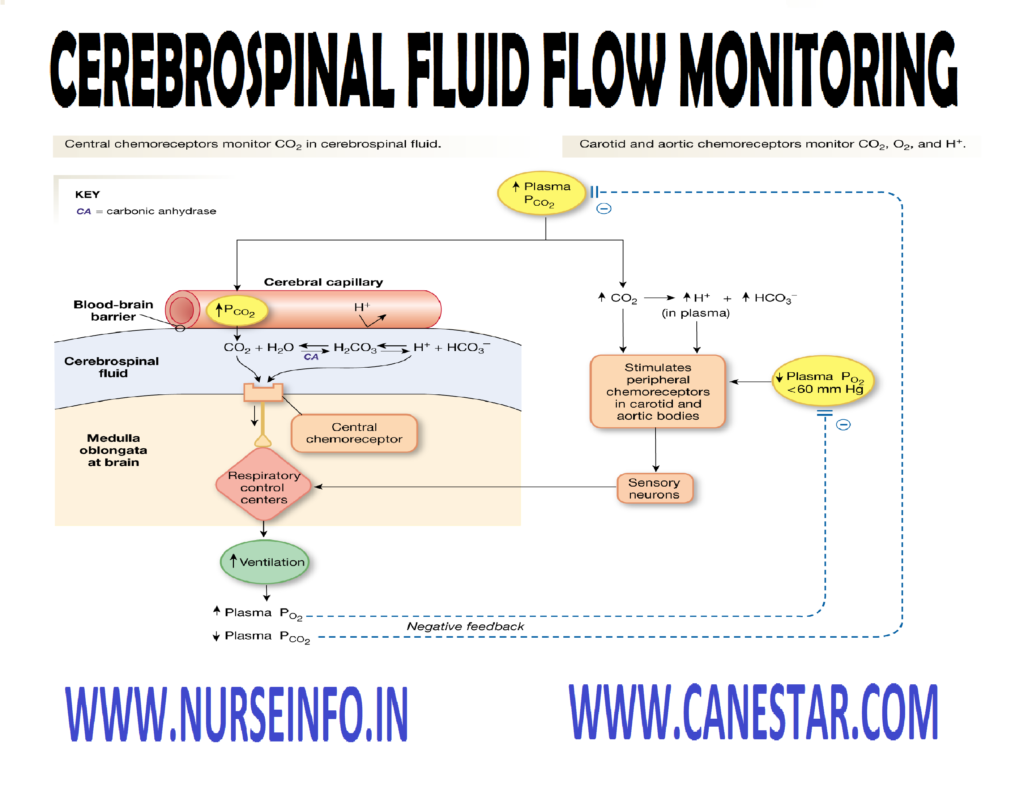CEREBROSPINAL FLUID FLOW MONITORING – Reference Values, Indications, Contraindications, Nursing Care Before the Procedure, Procedure and Nursing Care After the Procedure
Cerebrospinal fluid (CSF) flow scanning is a nuclear study performed to evaluate patency and filling of the CSF pathways and the reabsorption or leakage of CSF. It is most commonly used to diagnose surgically treatable hydrocephalus and to evaluate shunt patency postoperatively. A radiopharmaceutical is administered by injection into the spinal column via a lumbar puncture
Radionuclide used as 99m Tc or indium 111 (1111n) administered as technetium (Tc) 99m diethylenetriaminepentaacetic acid (DTPA) or indium In 111 DTPA, which flow with CSF. Imaging is performed in 1 hour and periodically up to 72 hours after injection
REFERENCE VALUES
Reflux of CSF into the ventricles; no obstruction of or increase in CSF volume or pressure
Interfering factors: inability of client to remain still during the procedure, especially if the client is a child
INDICATIONS FOR CEREBROSPINAL FLUID FLOW MONITORING
- Diagnosing and differentiating between communicating non-obstructive hydrocephalus or non-communicating obstructive hydrocephalus infants as revealed by reflux into ventricles or absence of reflux into ventricles respectively
- Evaluating the size of the ventricles with CSF reflux if an obstruction is present or evaluating the ability to reabsorb the fluid revealed by an increased uptake of the radionuclide in the ventricles
- Determining spinal masses lesions
- Evaluating preoperatively for shunt type and placement and postoperatively for shunt patency and effectiveness
CONTRAINDICATIONS
Pregnancy, unless the benefits of performing the procedure greatly outweigh the risks to the fetus
NURSING CARE BEFORE THE PROCEDURE
- Teaching should include information about the route of the radiopharmaceutical administration (lumbar puncture) and an explanation of the procedure
- Inform the client that the schedule of delayed studies may continue up to 3 days and that no medications are administered before the procedure
- Maintain the client in a supine position after the lumbar puncture
PROCEDURE
- The client is placed flat on the examination table in a supine position 1 hour after injection of the radiopharmaceutical into the spinal column. A head down position is also sometimes used
- The client is reminded to live very still while the scanner is operating. The scanner is moved over the head for imaging of ventricular flow
- Subsequent imaging takes place in 4, 6, 24, 48, and 72 hours, depending on persistent reflux
- Anterior, posterior, vertex and lateral views are made, with client position changed as needed for the desired projections
NURSING CARE AFTER THE PROCEDURE
- Assess the puncture site for leakage and apply a small dressing
- Return the client to the hospital room in a prone position
- Have a client maintain a prone or supine position for 4 to 8 hours after the study


